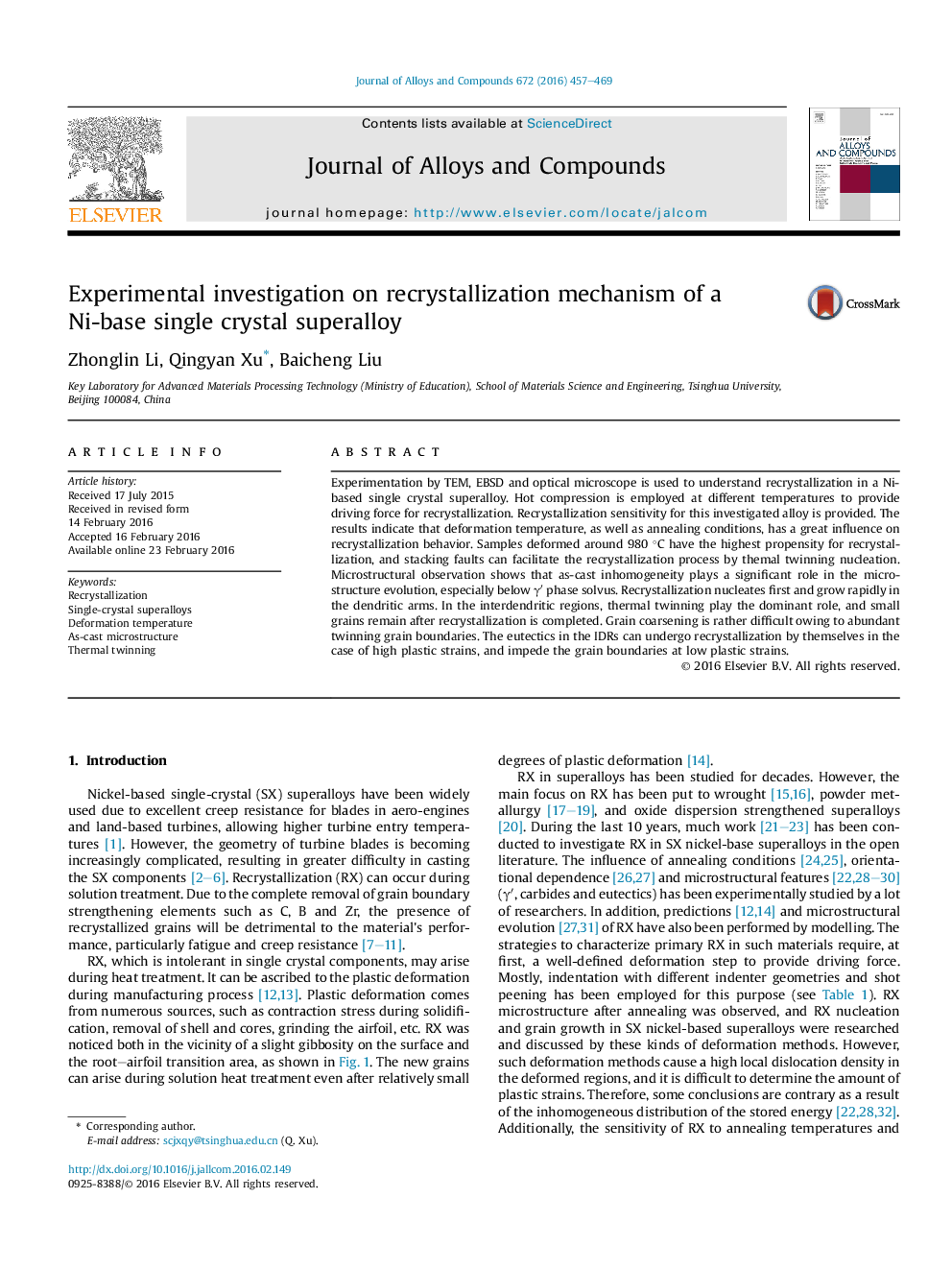| Article ID | Journal | Published Year | Pages | File Type |
|---|---|---|---|---|
| 7997684 | Journal of Alloys and Compounds | 2016 | 13 Pages |
Abstract
Experimentation by TEM, EBSD and optical microscope is used to understand recrystallization in a Ni-based single crystal superalloy. Hot compression is employed at different temperatures to provide driving force for recrystallization. Recrystallization sensitivity for this investigated alloy is provided. The results indicate that deformation temperature, as well as annealing conditions, has a great influence on recrystallization behavior. Samples deformed around 980 °C have the highest propensity for recrystallization, and stacking faults can facilitate the recrystallization process by themal twinning nucleation. Microstructural observation shows that as-cast inhomogeneity plays a significant role in the microstructure evolution, especially below γⲠphase solvus. Recrystallization nucleates first and grow rapidly in the dendritic arms. In the interdendritic regions, thermal twinning play the dominant role, and small grains remain after recrystallization is completed. Grain coarsening is rather difficult owing to abundant twinning grain boundaries. The eutectics in the IDRs can undergo recrystallization by themselves in the case of high plastic strains, and impede the grain boundaries at low plastic strains.
Related Topics
Physical Sciences and Engineering
Materials Science
Metals and Alloys
Authors
Zhonglin Li, Qingyan Xu, Baicheng Liu,
